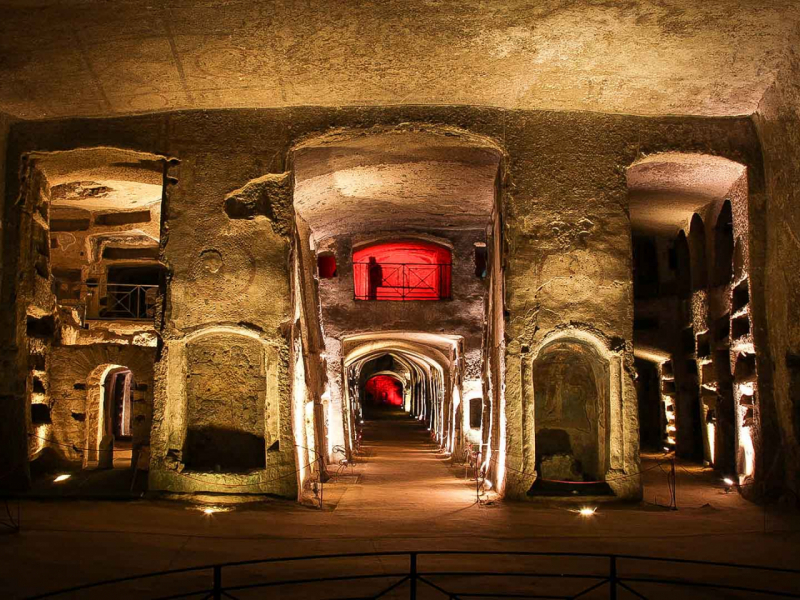
HISTORY OF POMPEII
02/04/2021
Pompeii rises on a plateau of volcanic formation, on the southern slope of Vesuvius, in a suggestive position, praised in Roman times by Seneca as well.
The archaeological excavations of Pompeii have returned the remains of the ancient city of Pompeii, near the hill of Civita, at the gates of modern Pompeii, buried under a blanket of ashes and lapilli during the eruption of Vesuvius in 79 AD, together with Herculaneum, Stabia and Oplonti.
The findings following the excavations, begun at the behest of Charles III of Bourbon, are one of the best testimonies of Roman life, as well as the best preserved city of that era. Most of the finds recovered (in addition to simple furnishings of daily use also frescoes, mosaics and statues) are kept in the National Archaeological Museum of Naples, and in small quantities also in the Antiquarium of Pompeii; precisely the considerable amount of finds was useful to make people understand the uses, customs, eating habits and the art of life of over two millennia ago.
Pompeii was founded around the eighth century BC. by the Osci who settled on the southern slopes of Vesuvius not far from the then navigable river Sarno.
The fortune of the city was from the beginning linked to its position on the sea, which made it the port of the centers of the Campania hinterland, in competition with the Greek cities of the coast. Of course the Pompeii Osca could not escape the Greek influence, which extended into the Gulf of Naples up to the Sorrento peninsula, including the islands of Capri and Ischia. However, the Greek hegemony on the Campania coast was soon threatened by the overbearing advance of a new, formidable power: that of the Etruscans, who also conquered Pompeii, and that of the Samnites later.




Later, as happened for all of Campania, it was conquered by the Romans, who made Pompeii become a great producer and exporter of wine and oil as far as Provence and Spain.
At this time there was a strong architectural impulse: the rectangular Forum and the triangular Forum were rebuilt and important buildings were born such as the Temple of Jupiter, the Basilica and the House of the Faun which is the size of a Hellenistic palace.
Pompeii constitutes the first example of systematic urban planning in Italy.
At the same time, the Temple of Isis was also erected which is a clear testimony of Pompeii's trade with the East.
Under Nerone, Campania suffered extensive damage due to an earthquake that occurred in 62 or 63 AD.
The Roman Senate immediately ordered its reconstruction, but all was in vain, because on 24 August 79 AD, when the rebuilding works of the town were still in progress, a disastrous eruption of Vesuvius completely canceled Pompeii and with it Herculaneum, Stabia and Oplonti.
There was almost no escape for anyone and of the flourishing Pompeii there was only a lava mantle up to three meters thick that cemented the inhabitants and destroyed all sorts of life. The plaster casts are the disconcerting testimony of how the inhabitants of the city perished.
The first excavations in the Pompeian area took place starting from 1748, at the behest of Charles III of Bourbon following the success of the findings of Herculaneum: the surveys were carried out by Roque Joaquín de Alcubierre, who, believing he was on the trail of the ancient Stabiae, unearthed several coins and objects from the Roman period near the hill of Civita, as well as portions of buildings, promptly covered after exploration. It was during the French domination, headed by Gioacchino Murat and his wife Carolina, that the excavations enjoyed a moment of fortune: the city walls were identified and the area of Porta Ercolano was almost completely brought to light; moreover, thanks to the publications desired by Carolina, the fame of Pompeii grew throughout Europe, becoming an obligatory stop on the Grand Tour.
In 1997, to preserve their integrity, the ruins, managed by the Archaeological Park of Pompeii, together with those of Herculaneum and Oplonti, became part of the UNESCO World Heritage List.
















